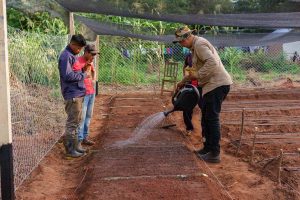In a world facing an unprecedented environmental crisis, the conservation of ecosystems has become a priority. However, traditional strategies have overlooked Indigenous Peoples and local communities (PICL), who have inhabited and managed these territories for centuries. “Inclusive conservation” aims to reverse this trend by integrating their knowledge and ways of life into biodiversity protection.
For many Indigenous communities, nature is not just a resource, but an extension of their cultural and spiritual identity. Their territories are spaces where relationships of reciprocity and respect intertwine. This approach contrasts with the Western view, which tends to separate culture from nature and apply conservation models based solely on biological science.
Numerous studies have shown that the best-conserved ecosystems in the world coincide with Indigenous territories. In the Chaco, for example, Indigenous peoples have maintained biodiversity through their hunting, gathering, and water management practices. However, many conservation policies have excluded these communities, even displacing them from their lands for the creation of protected areas.

Conservation as a matter of rights
The exclusion of PICL is not only an ecological mistake but also a violation of rights. More than a million people have been evicted worldwide in the name of conservation. In Argentina, the creation of El Impenetrable National Park affected the Wichí Nueva Población community, which lost access to their means of subsistence and saw their food security threatened.
Faced with this scenario, inclusive conservation proposes equitable collaboration among communities, scientists, governments, and organizations. It is about recognizing PICL as key players in the management of their territories and ensuring that their knowledge is taken into account in decision-making.
Progress and Challenges
The International Union for Conservation of Nature (IUCN) has created categories of protected areas that allow for Indigenous management, and many initiatives worldwide have shown that conservation is more effective when these communities’ rights are respected. However, obstacles such as restrictive legal frameworks, private interests, and structural discrimination persist.
The path to inclusive conservation requires profound political and social changes. It is not just about protecting biodiversity but about recognizing that environmental justice and human rights are inseparable. Ultimately, protecting the planet also involves learning from those who have lived with it for generations.

Indigenous Peoples and their key role in the environment
This study is not the only one affirming the importance of Indigenous peoples for the planet, as they contribute to environmental and species conservation. These communities have developed traditional knowledge and practices useful for sustainable use of natural resources because:
- Preserving biodiversity: they selected and adapted plants and animals to different climatic zones.
- Managing water resources: they built traditional houses that use little water in dry areas.
- Reducing erosion: they developed sustainable agricultural and livestock practices.
- Controlling climate change: they created climate-resilient practices, such as agroforestry.
- Preparing for disasters: they implemented adaptation strategies to environmental changes.
Thanks to the knowledge and skills they have developed over many years, Indigenous peoples can take a leading role in decision-making on climate change. This knowledge and experiences can become fundamental tools to find effective and sustainable solutions.
Author: Micaela Camino/Latinoamérica21.
Have you visited our YouTube channel yet? Subscribe now!

